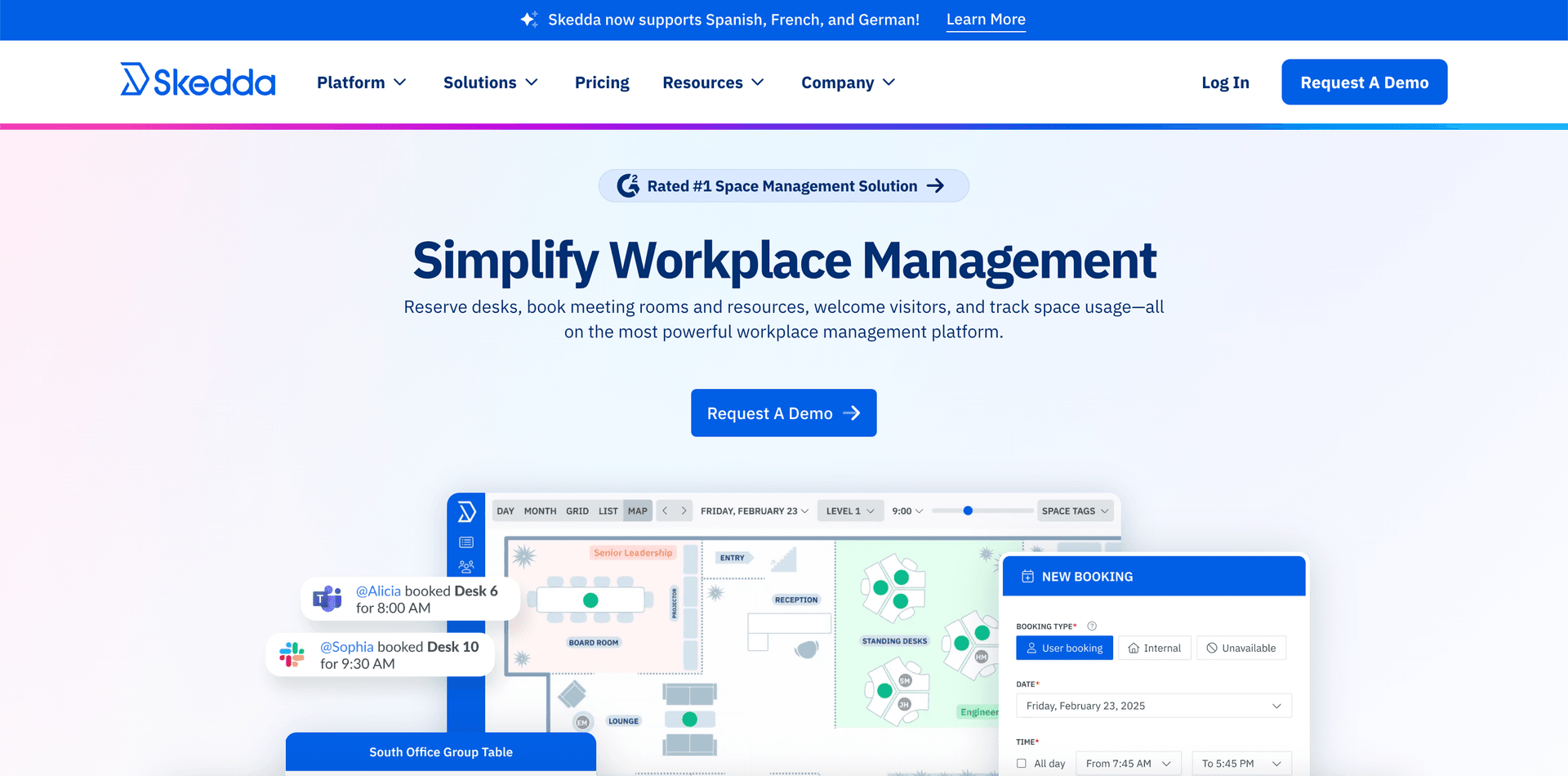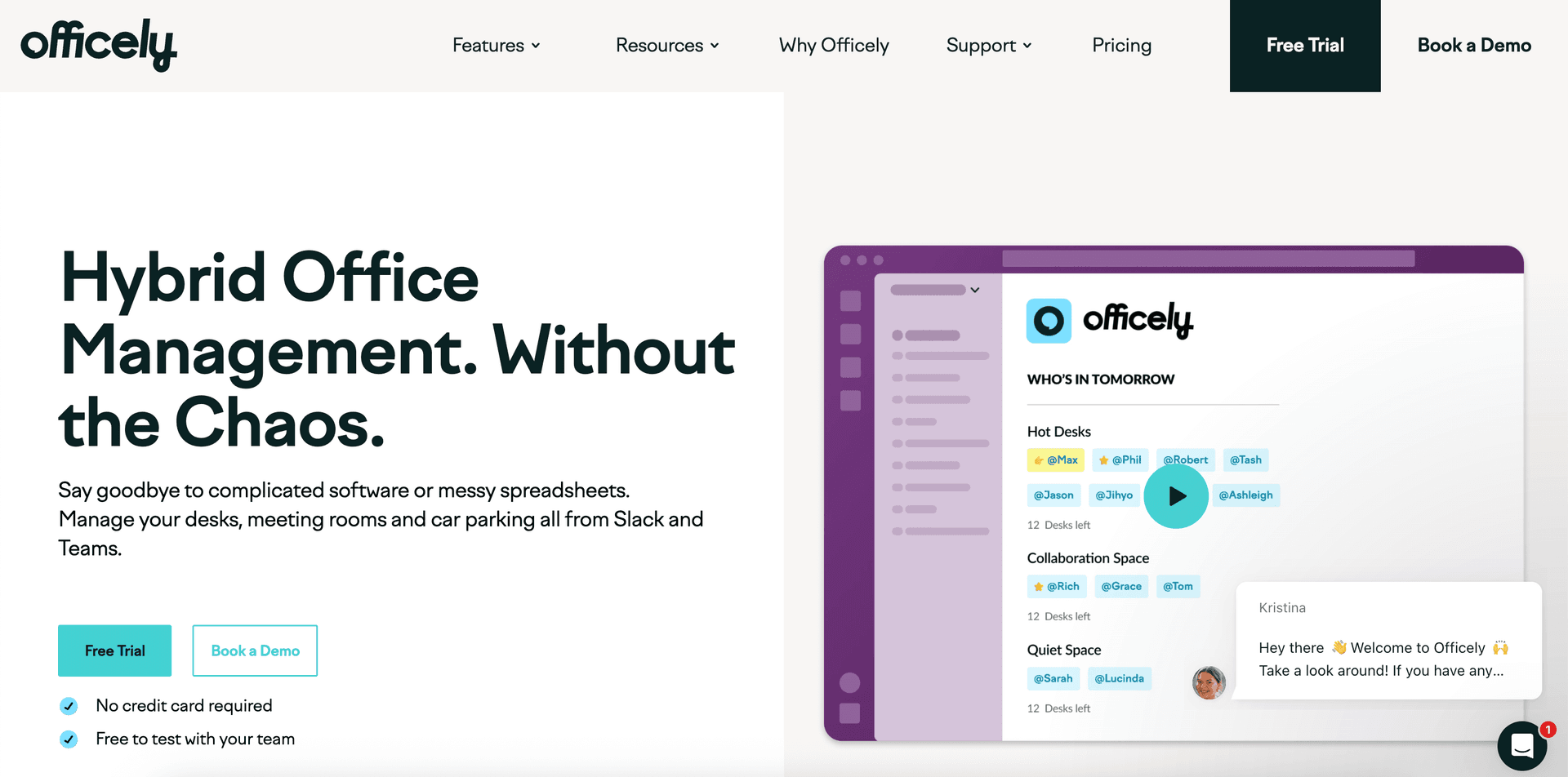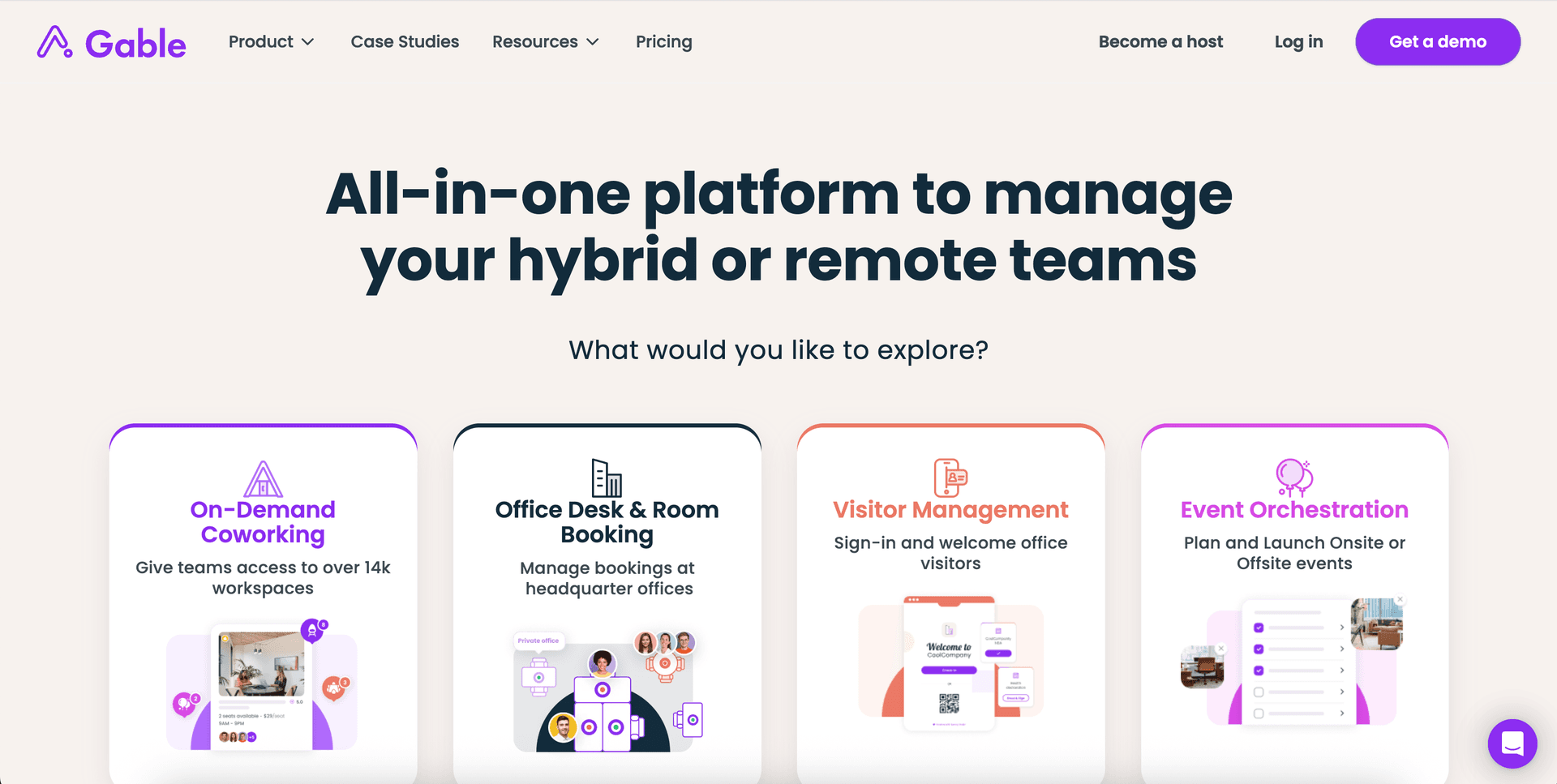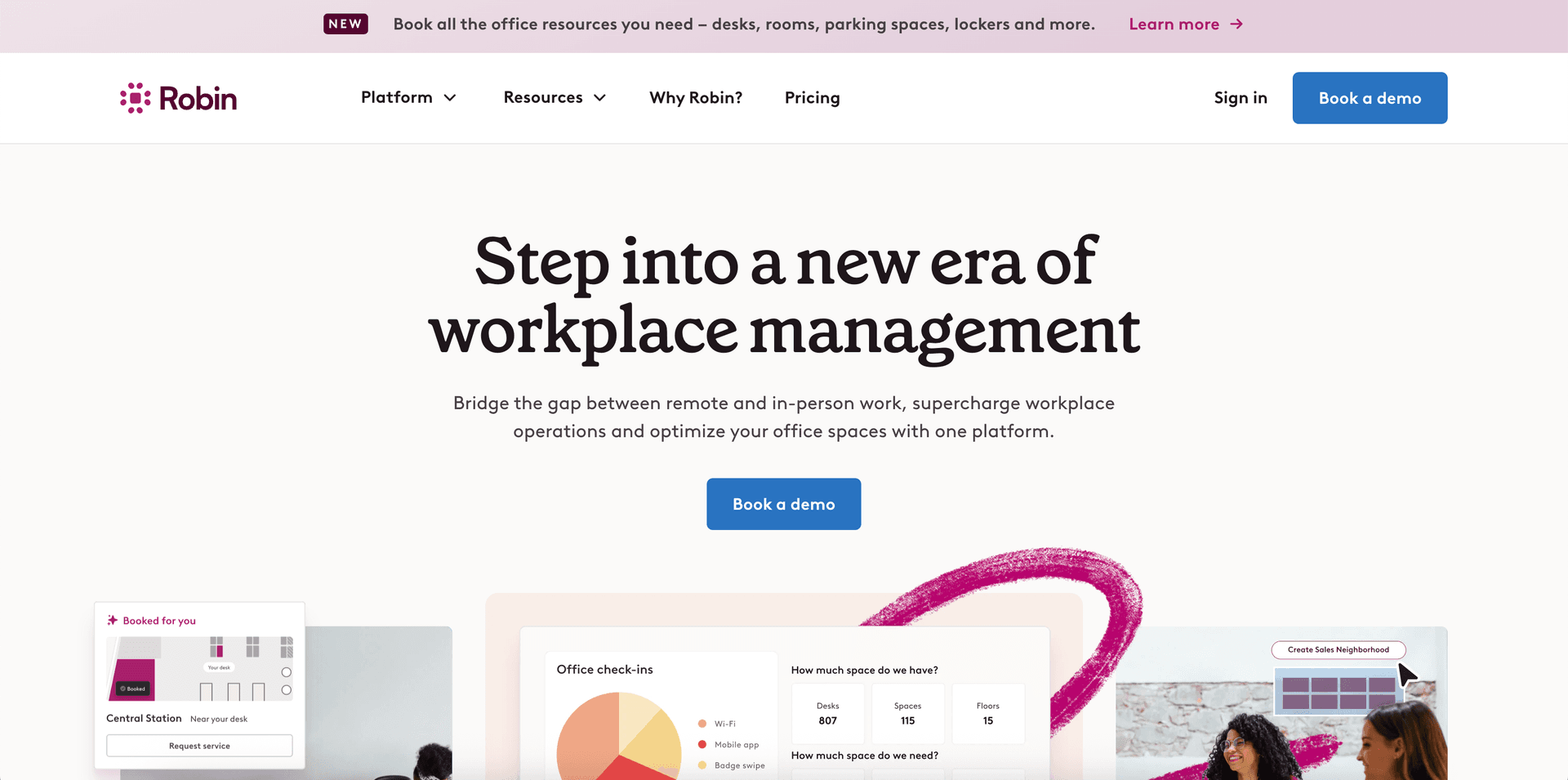Have you ever needed to use the meeting rooms at your office, only to find that they're already in use? Do you often struggle to find unused space at work and end up having to take important calls outside or in the corridors?
Every organization needs a meeting room booking system to ensure that its room usage is managed properly. There are a lot of details and data that go into this process, and there's a bewildering number of apps to choose from.
So how do you find the right facility scheduling software for you? Let us do it for you.
How we chose our top conference room scheduling app recommendations
We took as broad a view as possible while researching this article as we wanted to present a wide range of options for booking meeting rooms. As such the options listed below represent a range of apps for different target audiences, however the best software for ensuring room availability at the office should always include these factors.
- Good functionality with easy room booking and calendar syncing
- Easy to use and intuitive interface, for admins and normal users
- Customization options for things like booking pages and rules
- Multiple integrations with tools like Google Calendar and Microsoft Teams
- Facilitation of hybrid or remote work
- Security and access control
Calday
The best free conference room scheduling and calendar integration

Calday has all the key factors needed to ensure less confusion in the office through better room usage. Its functional performance packs a punch as its easy to create custom booking pages that show each of your available meeting rooms, and it generate automatic reminders and integrate with multiple third-party apps as well.
Intended audience
Anybody can use Calday, whether they're a CEO needing meeting rooms for the board or a student wanting to avoid double-booking their revision sessions. There are customization options galore, security factors that facilities managers will love.
Best of all? It’s free to use!
USP
Calday does everything you need to ensure you can reserve rooms in your office with ease. Each room can get a customizable booking page, complete with availability rules, buffer times, and calendar sync. Nothing beats this space management software for efficacy and bang for your buck.
Pros
- Free forever
- Fast to set up
- Works with Google & Outlook
- No logins for guests
- Intuitive design
Cons
- Lacks enterprise analytics
- No AI integration (yet)
- Not built for large, multi-floor offices
- No native mobile app
Skedda
Complex meeting rooms management

If your room and facility scheduling requirements are particularly complex then Skedda might be a good option for you. It offers detailed booking rules, user permissions, smart policies, and includes advanced customization like amenities and reservation purchasing.
Intended audience
This app is designed to be used by professionals like facilities managers and not regular employees. The software works best for organizations that need secure access control and usage oversight in real time to manage complex office layouts.
USP
Skedda’s strength lies in its deep rule system: you can control who books what, when, and how often. It also supports check-in, cancellation windows, and audit trails, making it ideal for persons responsible for managing large office spaces with multiple meeting rooms.
Pros
- Detailed access control
- Powerful performance
- Supports calendar sync
- Ideal for facilities teams
- Strong analytics
Cons
- Learning curve for new users
- No free trial
- Very expensive
- UI feels dated
- Overbuilt for small organizations
Officely
Facility scheduling with Slack

Are you one of the thousands of companies that integrate Slack into their daily operations? If so, and you need something that can book meeting rooms while also functioning as a hybrid office management tool, then consider Officely.
Intended audience
Any company that uses Slack can use Officely to manage their meeting rooms, which makes it a popular platform for organizations working in hybrid or remote mode. It works particularly well for managers seeking to track attendance and encourage in-office collaboration.
USP
Officely's software lives within Slack, and you don't need any extra equipment other than your usual devices to get started with the system. This can save you time and resources due to minimal setup, but you lose out on a lot of functionality and power.
Pros
- Slack-native
- Lightweight
- Easy setup
- Attendance tracking
- Hybrid-focused
Cons
- Room booking is basic
- Limited outside Slack
- Few customization options
- No public booking pages
- Doesn’t scale well
Archie
A pretty (expensive) booking system

The importance of function over form for software, devices, and other equipment should be apparent, but that hasn't stopped companies from trying to tip the balance. Archie has really put its thumb on the metaphorical scale with its facility scheduling system.
Intended audience
With a beautiful design, this tool is focused on office managers looking for a professional, client-facing experience. It's less useful for those focused on using meeting rooms for internal purposes.
USP
Aside from being the right choice for those focused on aesthetics, Archie's unique edge is that it allows you to monetize meetings space. You can also set and confirm booking rates, automate billing, and track usage in real time.
Pros
- Branded booking pages
- Monetization tools
- Client-facing display
- Admin dashboards
- Custom user roles
Cons
- Expensive
- Overkill for small companies
- Not designed for internal scheduling
- Steep learning curve
- Limited calendar sync
Gable
Key features for hybrid teams

A hybrid option that handles facility scheduling in addition to other functions, Gable offers all the standard key features you'd expect to see. Its primary client bases is companies working in hybrid mode that need to be flexible with their meeting rooms.
Intended audience
Gable positions itself as something of a jack of all trades, but it's best used by organizations that work in hybrid mode. If you're plugged into Google Workspace, it might prove useful as well since it integrates well with the tech giant's apps, including Google Calendar.
USP
Gable’s edge is its ability to manage multiple room spaces in one place, and some of its analytics tools can be useful for workplace design. However, it's worth noting that while it offers a lot of functions, some of these are stretched too thin as a result.
Pros
- Hybrid-first
- Usage analytics
- Multi-location support
- Partner workspace access
- Google Calendar integration
Cons
- Over-stretched resources
- Complex navigation
- Limited user controls
- No public links
- Overbuilt for basic needs
Envoy
Informed decisions for enterprises

If you're a larger-sized company with a big budget then Envoy has all the bells and whistles—including meeting room displays, automatic check-in, and air conditioning and occupancy sensors. The system also ensures your property is secure, with integrated badge systems, building access, and visitor check-ins.
Intended audience
Envoy is designed solely for enterprises, so unless you're a large organization with a correspondingly large number of meeting rooms to monitor, this won't be the app for you. We're talking about entities that don't need things like Microsoft Outlook because they have a white label solution.
USP
You can automate check-ins, connect rooms to badge entry systems, check air conditions, and even trigger occupancy-based releases. These smart features do come with a high price tag, however.
Pros
- Badge system integration
- Occupancy sensors
- Enterprise-grade features
- Visitor management
- Live room status
Cons
- Expensive
- Requires hardware
- Complex setup
- Overkill for small offices
- Limited free tier
Robin
For Google Calendar/Google Workspace

Robin specializes in calendar-driven room booking with a focus on large teams with corporate office layouts. It can process data about your organisation and automatically set up meetings while also blocking off time to ensure buffers and to prevent overlaps.
Intended audience
Robin works best for IT and operations teams that need analytics, particularly for those accustomed to the Google space management system. Smaller companies and startups are less likely to make full use of its booking and reservation system.
USP
Robin’s standout feature is its smart room-matching system. Based on event size, location, and amenities, it auto-suggests the best space and prevents double bookings. However it requires a large base of employees to work properly.
Pros
- Smart room matching
- Calendar-first
- Good UI
- Analytics available
- Wayfinding support
Cons
- Not free
- Some features gated
- Complex for small teams
- Admin setup required
- Cost scales with size
Kadence
Check in designed for less confusion

Kadence is a hybrid workforce planner that lets employees reserve desks, rooms, and collaboration spaces. It visualizes who’s working where on any given day, in a way that's designed to ensure less confusion in space management.
Intended audience
Kadence is designed for hybrid teams managing multiple workspaces and struggling to easily find meeting space. This applies particularly to HR departments juggling office attendance and space planning.
USP
The Kadence system maps out seating, desks, room availability, and team schedules in one place. However the room booking segment is wrapped in a more complex work toolkit, potentially reserving access.
Pros
- Pro-hybrid
- Visual scheduling
- Good calendar sync
- Team coordination
- Seat/room management
Cons
- Setup takes time
- Not purpose-built
- Overheads for small teams
- Limited public link options





